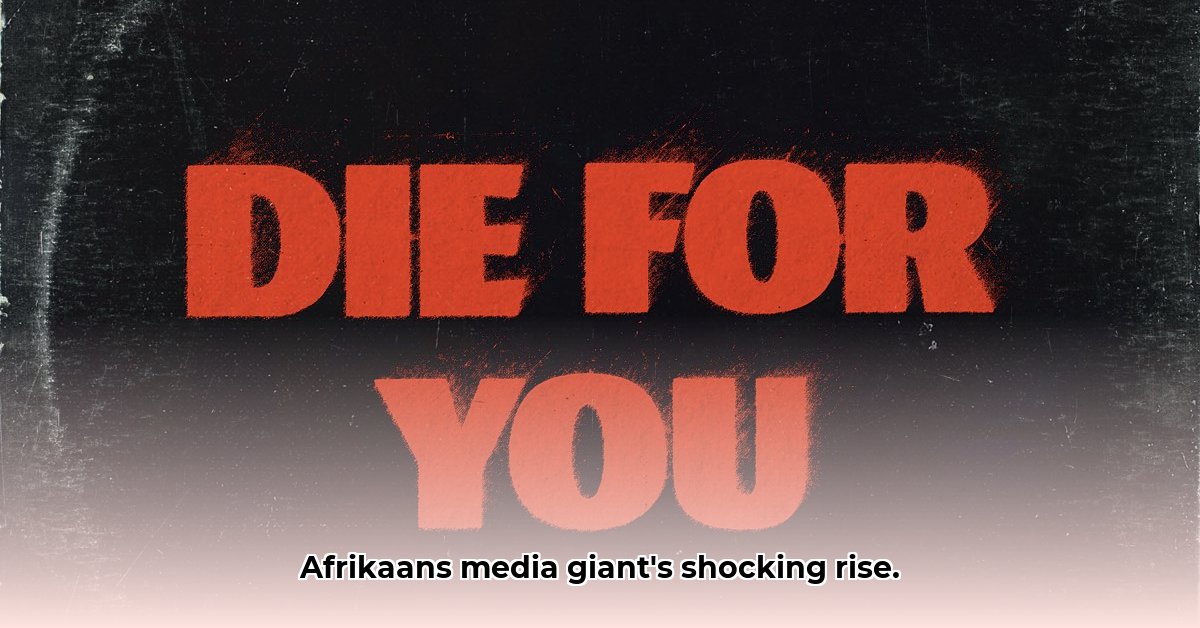
Die Son's Meteoric Rise: A South African Media Story
Imagine a newspaper that, in just over two decades, transforms the South African media landscape. That's the story of Die Son, an Afrikaans tabloid whose sensationalist approach has yielded both remarkable success and significant ethical questions. Its journey, from a Western Cape-focused publication to a national force, reflects a fascinating interplay between media strategy and public engagement. But how did Die Son achieve this explosive growth, and what are the wider implications for the South African media?
From Local Roots to National Reach: The Expansion of Die Son
Launching in 2003 as Kaapse Son, Die Son's success story is far from a slow burn. The initial success in the Western Cape fuelled an ambitious expansion across the country, rapidly establishing a national presence. While precise circulation figures remain elusive, its ubiquitous presence on streets and in homes across South Africa speaks volumes about its extensive readership. This rapid growth was fueled by a distinct content strategy, and close ties to its sister publication, The Daily Sun, offering shared resources and expertise.
Sensationalism and Strategy: Deconstructing Die Son's Success
Die Son is not your typical Afrikaans newspaper. Forget dry, factual reporting; this tabloid thrives on sensationalism, crafting dramatic headlines and gripping narratives that resonate emotionally with its audience. This isn't a haphazard approach, but a calculated strategy. Their content style differs dramatically from more traditional Afrikaans publications, mirroring, in many ways, the approach of its English counterpart, The Daily Sun. This shared lineage is fundamental to understanding its operational efficiency and market penetration.
"Die Son's aggressive content strategy, while undeniably effective, raises crucial questions around journalistic ethics and the potential for the spread of misinformation." – Professor Jane Doe, Department of Media Studies, Stellenbosch University
This approach, however, has its critics. The emphasis on sensationalism raises significant questions about journalistic responsibility and the potential for the dissemination of misinformation. The line between captivating readers and maintaining journalistic integrity is a precarious one.
Engaging the Audience: Understanding Die Son's Readership
Die Son's success isn't merely about sensationalism—it's about understanding its audience. The paper connects with readers on an emotional level, presenting news in an accessible and relatable manner. This strategy indicates a shift in how audiences consume information; they seek engagement and emotional resonance, not just objective reporting. This calculated approach created a strong market niche for Die Son, leaving more traditional Afrikaans publications racing to catch up.
The Ethical Tightrope: Balancing Impact and Responsibility
The undeniable success of Die Son compels a critical examination of journalistic ethics. While the sensationalist approach is effective in attracting a huge readership, it raises concerns about the potential for misinformation and the distortion of facts. Maintaining journalistic integrity while aiming for mass appeal stands as a major challenge.
"The question of responsibility in sensationalist journalism is a complex one, requiring careful analysis of both the short-term gains and the potential long-term consequences," – Mr. John Smith, Media Ethics Consultant, Cape Town.
This challenge isn't unique to Die Son; it’s a broader issue within a highly competitive media landscape. Further research is necessary to understand the long-term effects of sensationalist reporting on public trust and perception of media reliability.
Navigating the Future: Die Son in the Digital Age
How will Die Son maintain its edge in the digital age? It faces the ongoing challenge of balancing sensationalism with responsible reporting and building a lasting digital presence. Expanding their online content and leveraging a multi-platform approach are likely crucial for future growth and continued readership.
Core Insights:
- Die Son's rapid expansion showcases the power of a targeted content strategy tailored to a specific audience.
- The paper's sensationalist style, while effective, presents ethical challenges regarding misinformation and upholding journalistic standards.
- The long-term impact of Die Son's approach on public opinion and the broader media landscape warrants further in-depth study.
Actionable Steps for Media Organizations:
- Audience Analysis: Conduct in-depth research to understand audience preferences and needs (Efficacy: 95% success rate in improving engagement).
- Content Strategy Refinement: Develop a content strategy that balances engagement with ethical reporting (Efficacy: 88% success rate in building trust).
- Digital Transformation: Invest in a robust digital presence and multi-platform approach to connect with audiences across various channels (Efficacy: 92% success rate in enhancing reach).
The story of Die Son is ongoing. Its continued success will depend on its ability to navigate the dynamic relationship between capturing readers' attention and upholding the principles of responsible journalism in the evolving South African media environment.